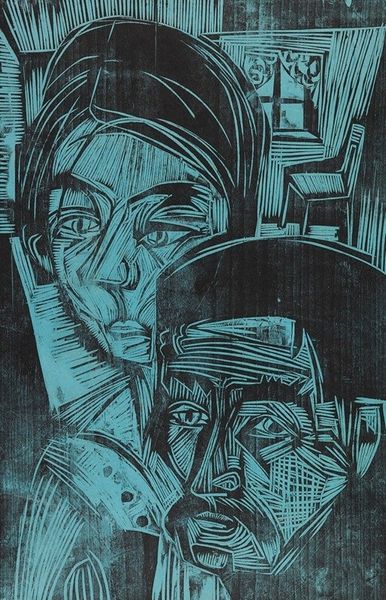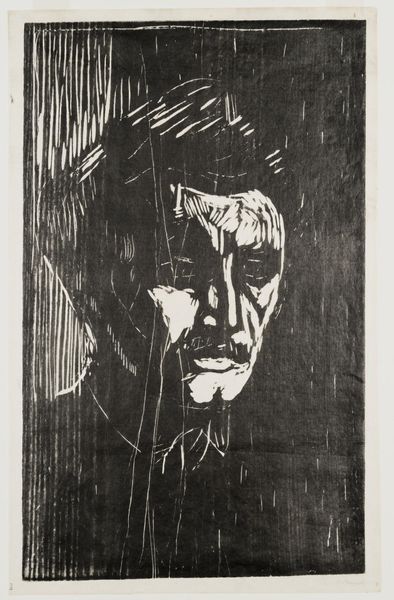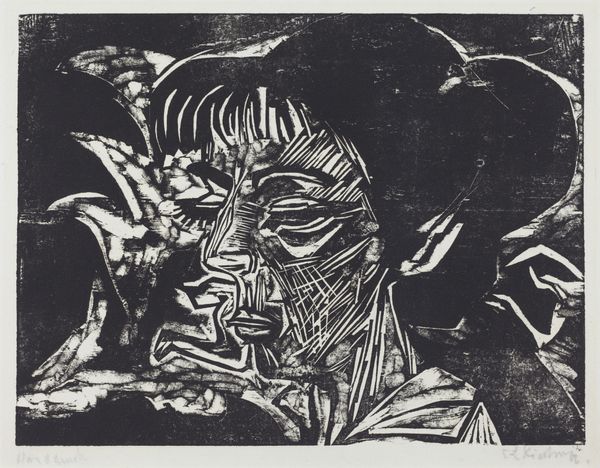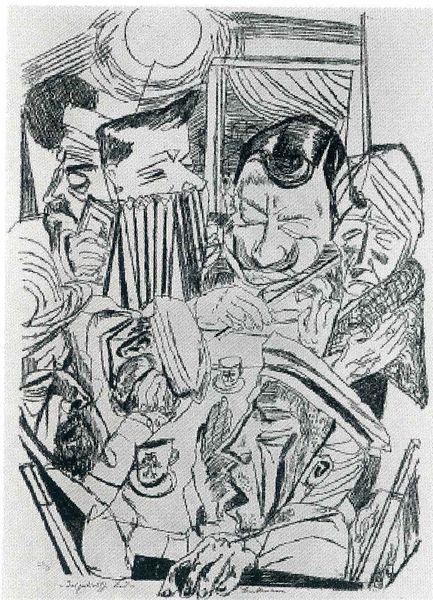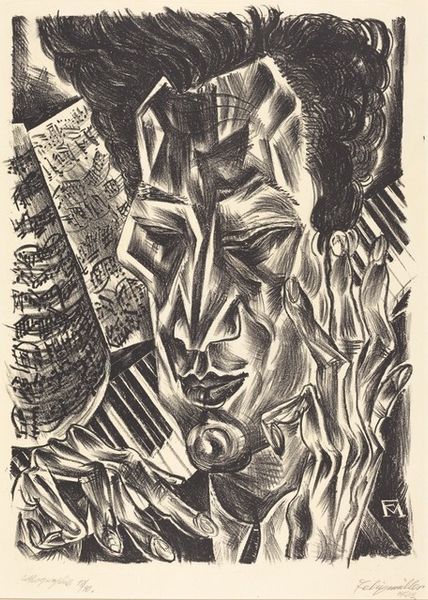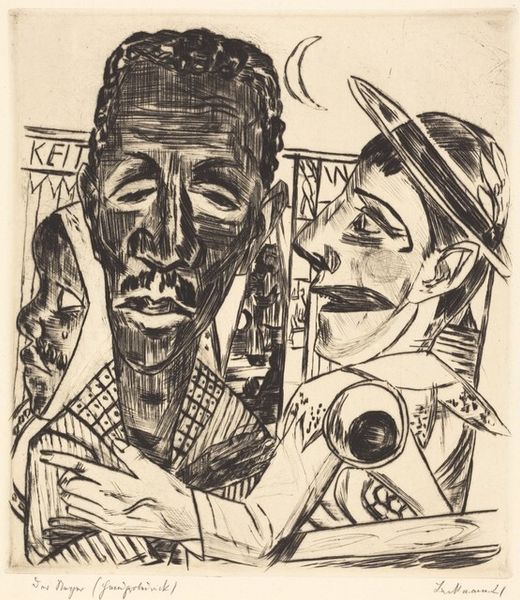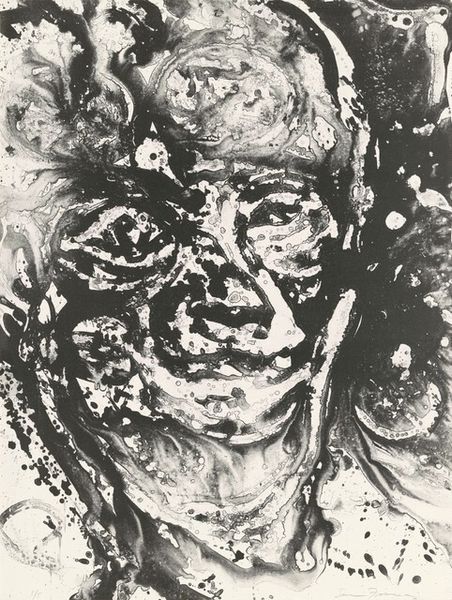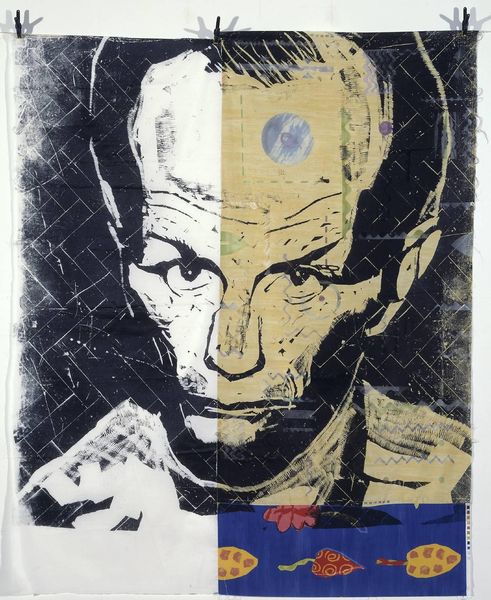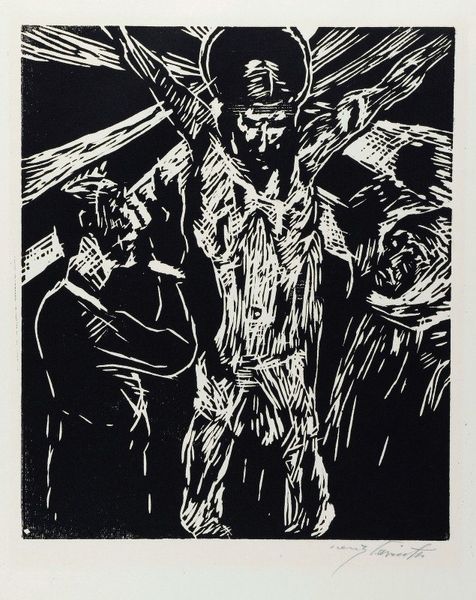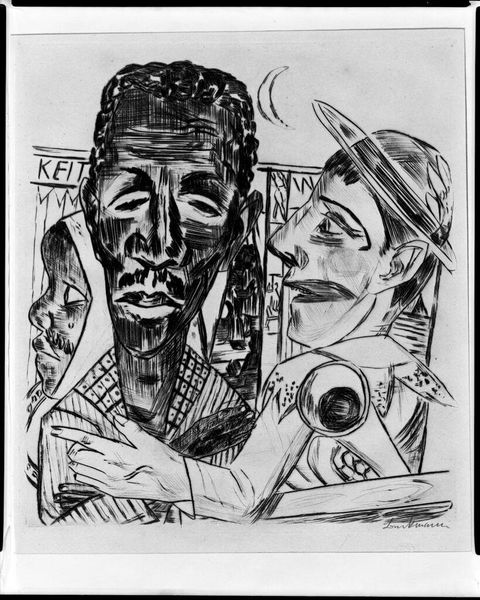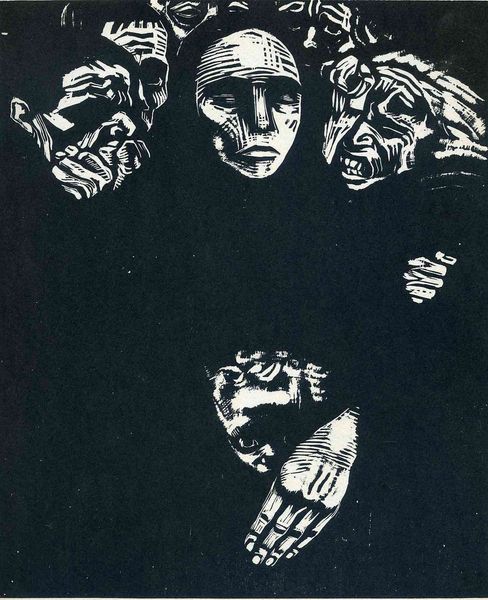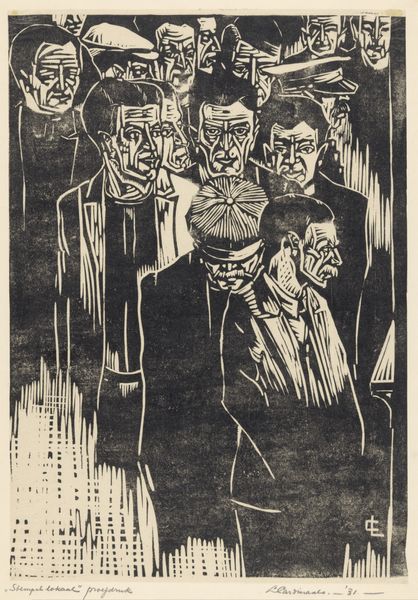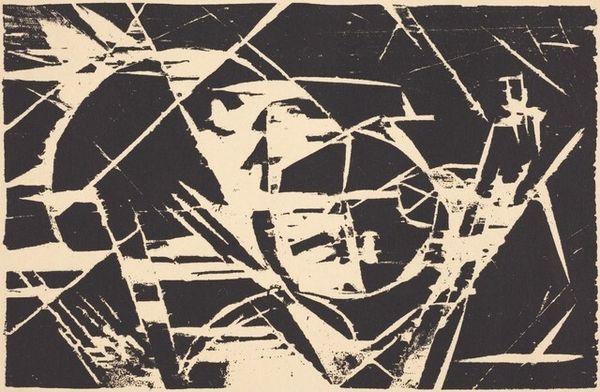
Copyright: © Thomas Kilpper | CC-BY-NC-ND 4.0 DEED, Photo: Tate
Editor: Here we have Thomas Kilpper's "The Ring: Gordon Harker." It's a striking black and white print. The materiality feels raw. What can you tell me about this piece? Curator: The rough, almost protest-poster aesthetic points us to Kilpper's interest in accessible art forms and social commentary. Consider the labor involved in the woodcut process itself; it mirrors the physical exertion of boxing, placing value on the means of production. How does this materiality contribute to the meaning, you think? Editor: It gives it a sense of immediacy, like a call to action. It makes me wonder about the original context for this piece. Curator: Exactly! Kilpper often critiques power structures, and the mass production potential of prints allows for wider dissemination of his message. It challenges the traditional art market and who consumes art. A provocative statement, isn't it? Editor: It really changes how I see the piece. Thanks!
Comments
tate 8 months ago
⋮
http://www.tate.org.uk/art/artworks/kilpper-the-ring-gordon-harker-p78545
Join the conversation
Join millions of artists and users on Artera today and experience the ultimate creative platform.
tate 8 months ago
⋮
This is one of a series of unique prints generated from a site-specific work created in an office block on Blackfriars Road, in the London borough of Southwark. Orbit House was abandoned and scheduled for demolition when Kilpper gained access to the building in 1999. He carved a giant woodcut into the mahogany parquet covering the tenth floor, comprising an area of approximately 400 square metres. The woodcut depicted a boxing ring surrounded by an audience of some eighty characters whose names were cut around the edge of the image. The artist derived the portraits from photographs and etchings which he made into slides and projected onto the floor before carving the relief with chisels and a chainsaw. He then made a succession of prints, constituting individual portraits, on a range of new and found materials. He used old curtains left in the building, often sewing several pieces together to make one large, rectangular support. Paper sources include advertising hoarding paper and sheets of purple ultra violet polythene film which Kilpper discovered screening windows in some rooms of the building. The herringbone texture of the parquet features strongly on all the uncut areas of the prints which were executed mainly in black ink using a specially-made giant, cement-filled roller. During the exhibition of the work, the prints were suspended on washing lines above the carved floor. Daylight from the surrounding windows filtered through their semi-translucent supports. Visitors would walk on the carved parquet while looking at the prints. A huge banner was printed from the entire surface (The Ring, collection the artist) and hung on the outside of the building for the duration of the installation. Tate owns twenty-one prints, twenty made on fabric (Tate P78537-P78556) and one on paper (Tate P78557). The Ring: Fight On (Tate T07671) is a section of the parquet flooring preserved before the building’s demolition in late 2000.
